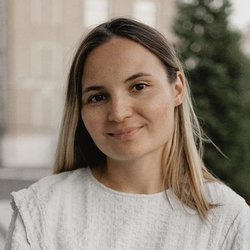‘We should talk about it!’: Bay Khayrullin and Mira Rakhmat making film on Tatar ichigi
Young director and operator Bay Khayrullin and founder of a Tatar handicraft school Mira Rakhmat are shooting a film on the creation of the Tatar national shoes, leather mosaic and the history of the famous Arsk factory. Read in Realnoe Vremya’s report about the shooting process and the main idea of the film.
“I am Tatar. I want to tell the world about my people!”
Bay Khayrullin is a director, operator of video clips, commercials, co-author of Bilyar. Larder of Legacy film that became 1st degree laureate of We Russian contest of national video clips in Documentaries nomination as professionals, which was in Tyumen in autumn of 2022; the owner of a special diploma for tolerance and solidarity of religions in Interethnic Friendship nomination of the 6th Native Paths national TV and film competition in Moscow.

Bay Khayrullin plans to make a film about ichigi boots in Tatar translating it into Russian and English:
“I am Tatar. I want to shoot about my people, my culture and show it to the whole world! When I started to think about the theme of a new film, I had several options. I wondered what a film could be made about to tell somebody about the entire people. First, I thought a film about Tatar dance needed to be made — about its history, what these or that movements meant. I thought to touch Tatar adornments in the film too. For instance, to explain why the tulip is so often used in our ornament. Then I came up with the idea of ichigi. In the end, I concluded I needed to shoot a film about them.”
“Workshops existed before the appearance of factories”
Arsk town where the national shoe factory was located became the first stop during the preparation for the shooting. The authors were told the history of the enterprise in Behind Kazan Arsk Historical and Ethnographic Museum. Accoridng to head of the Native Land Department Lenar Gubaydullin, the foundation was laid long before the appearance of the renowned factory:

According to the worker of the museum, Klachi people used to travel to Kazan and be hired by the rich long time ago, before the revolution. Labour workshop that was separated from Tukay workshop was organised in Klachi village itself only in 1941. In 1960, Tukay became larger by joining Labour. This time, the centre was in Klachi village.
“A national shoe factory designed to make 300,000 pairs of shoes was built in Arsk settlement in 1971-1975. 92 flats for workers of the enterprise, a hall of residence for 32 people, two kindergartens for 140 kids, a two-storey embroidery shop, two blocks with four and 10 flats were delivered in the 1980s. In 1980, the Arsk National Shoe Factory won a gold medal at a Leipzig fair in Germany,” Gubaydullin said.
Driven by common idea
Precisely Behind Kazan museum from Arsk united two authors driven by one common idea.
“Once I was sitting in a cafe in Kazan, thinking about what to start the work on the film with, and then I remembered that I had wanted to go to the Arsk museum for a long time. I immediately called it, asked to tell me the history of ichigi, I was invited there the same day, I upped and went to Arsk. This is how it all began. I was told at the museum — both the workshops located in villages and a big national shoe factory. I made sure once again there that this was the theme I needed. I was told at the museum that a girl who was also interested in this theme and wanted to make a film about it had come just two weeks ago. I was given her contact. We talked on the phone and decided to work on the project together,” Bay Khayrullin said.
“To shoot and shoot immediately”
Mira Rakhmat, the founder of Kul Eshe (“handicraft” from Tatar) concept Tatar arts and crafts school where people are taught how to embroider, create leather mosaic and weave, was that girl. Mira was born and grew up in Moscow, she moved to Kazan in 2005. In her Rakhmat school, her colleagues teach traditional arts and crafts, revive the handicraft culture. The masters often tell students and tourists about the Arsk National Shoes Factory during classes.

At the moment when she was preparing for the trip, looking for people who worked in the factory, the following thought slipped through the girl’s mind: “It is so sad that such a big factory existed, how well everything developed, and all of a sudden there wasn’t any, and nobody is interested in it, nobody has ever heard about it.” This seemed unfair to her. And then she had the idea of undertaking something.
“We had a chance of meeting former workers of the factory Anas Gilyaziyev and Sufiya Gilyaziyeva. As soon as I saw their eyes when they were telling me about the heyday of the national shoe factory, I understood that I wanted to make a film. I understood looking at them that I had little time: both of them are over 80, we aren’t eternal, I want to save this story very much. This is why I left Arsk strongly determined to shoot and shoot immediately. As soon as possible. Just half a month later, Bay wrote me and said that our ideas coincided, he offered to unite the efforts. We knew that we had one mission,” Rakhmat explained.
Mira Rakhmat is the producer general and co-author of the film. According to the authors’ idea, the documentary is key in the film, but it will have a feature storyline too. The synopsis is that a girl from a Tatar family who lives in Moscow and works as designed goes to Tatarstan to design new styles to Arsk District. Here she learns the history of creation of national shoes. As Bay Khayrullin explained, the past, the present and the future of this art will be shown through this line.
“It is a pity that everything was forgotten”
“We have just started to shoot. I have just managed to take several interviews. For instance, we talked with Mr Gilyaziyev and his spouse, they worked in the experimental shop of the national shoe factory in the past. They tried to think about a new shoe design then. Even sneakers with a Tatar ornament were made. Unfortunately, we didn’t manage to find a single sample, only photos are left. Later we went to Mulma village, interviewed women who worked at the factory,” the director said.
The authors of the film had two shooting days. They think they were very lucky to get acquainted and talk with those who worked at the factory:
“Special thanks to Lenar Gubaydullin, he helped us very much. We shot in a school. Six women who told us about those times with pleasure gathered here. It was seen these are pleasant memories for them. Just imagine, more than 1,500 people worked at the factory and its branches in Arsk District. It had its own kindergarten, its school. Houses were built deliberately for the workers. It is a pity that everything was forgotten and nothing was restored,” Mira complained.
Traditions integrated into modern time
“We are surprised how such a big national shoe factory could be lost without trace. The once widely spread was almost lost. This is why we took up this theme. We want to tell people about truly Tatar traditions once again. To them to both adults and modern youth. It is also important that we want to make it beautiful so that after seeing our film young people will want to wear things with the national colour. We think this film will help save the history of our people. Also, it will show how history and traditions can be integrated into modern time,” Bay Khayrullin expressed his confidence.
Demand for self-identification
In Rakhmat’s opinion, this theme is topical because now people are starting to be interested in their own culture, the demand of the people’s self-identification is huge.
“There is more and more interest, moreover, in the light of the recent events. People are interested in something close to them. The idea of locality is now backed very much. A person needs to know where they come from, their origins, their culture. People understand that it is important to remember the history of their people. It is a very important area of an individual’s development. Due to this there appears demand for a big amount of information, and a film breaking everything down is one the options. We would like the film to go outside our republic, and even our country, so that as many people as possible can learn about our art. Leather mosaic is a trademark of Tatarstan. We can say that at the moment this area doesn’t develop in any part of the world as much as it does here. Historically, our land is the cradle of this craft. We should talk about it,” Mira Rakhmat is convinced.